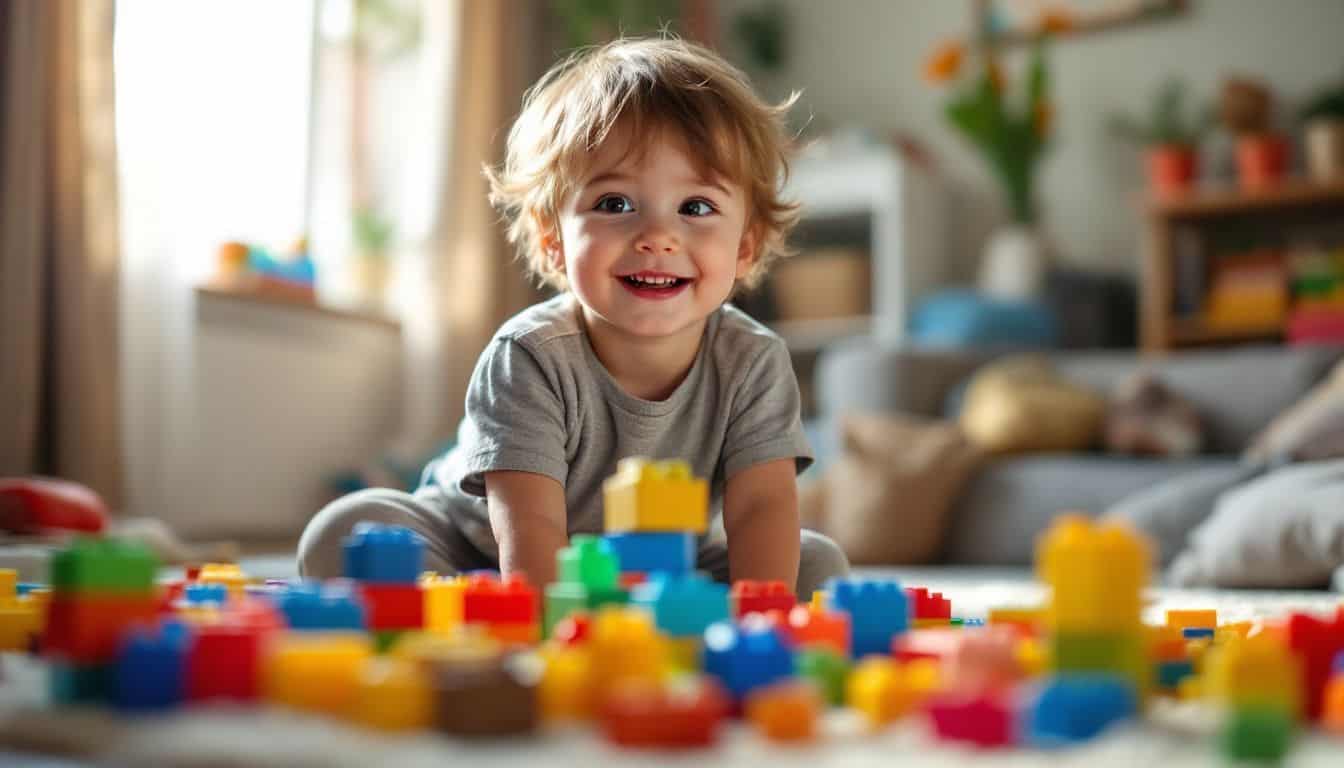Ever wondered what educational toys are and how they can boost your kid’s brainpower? You’re not alone. These clever playthings have been around since the 1700s, sparking young minds for centuries. To ensure they are age-appropriate, parents should carefully select toys that match their child’s developmental stage.
This article will unpack seven fun ways these toys can turn your little one into a mini-genius. Ready to play smart?
Key Takeaways
Educational toys have been around since the 1600s, starting with John Locke’s wooden blocks in 1693.
These toys boost IQ, problem-solving skills, creativity, focus, and social-emotional growth in kids.
Popular types include building sets like LEGO, pretend play kits, science sets, and tech-based toys.
Toy design is based on learning theories like Piaget’s Cognitive Development and Montessori Method.
When picking toys, consider safety, age-appropriateness, open-ended play options, and educational value.
Table of Contents
Understanding Educational Toys
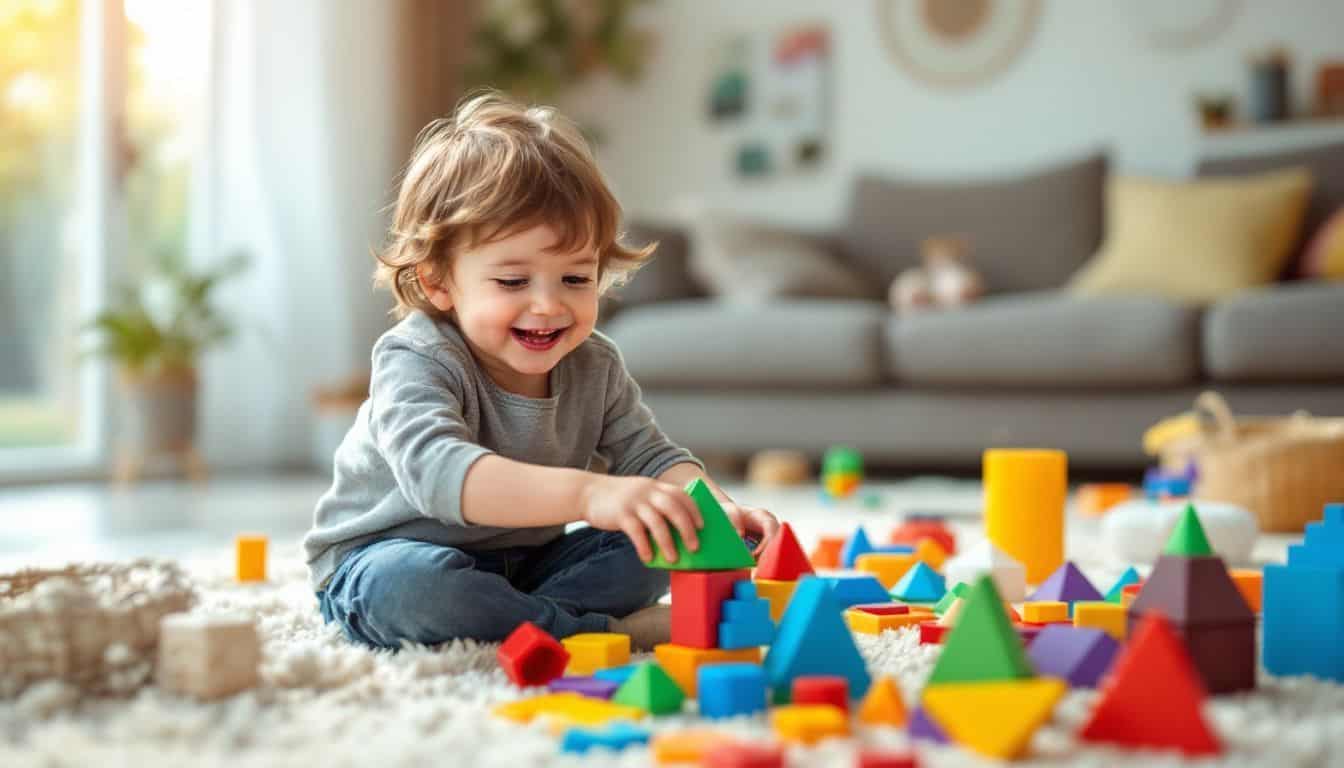
Educational toys are like brain food for kids. They’re not just fun – they help little ones learn and grow. These toys are made to teach specific skills or subjects. Think of them as mini-teachers in toy form! They often copy things adults use, helping kids understand the world around them.
Parents and teachers love these toys because they’re designed to make learning a blast. From building blocks to science kits, many educational toys are available at Discoup, offering a wide range of learning opportunities.
Play is the highest form of research. – Albert Einstein
Tiles are a great example – they’re super popular because they boost awareness and critical thinking. Next up, let’s look at how these clever toys came to be!
Evolution of Educational Toys
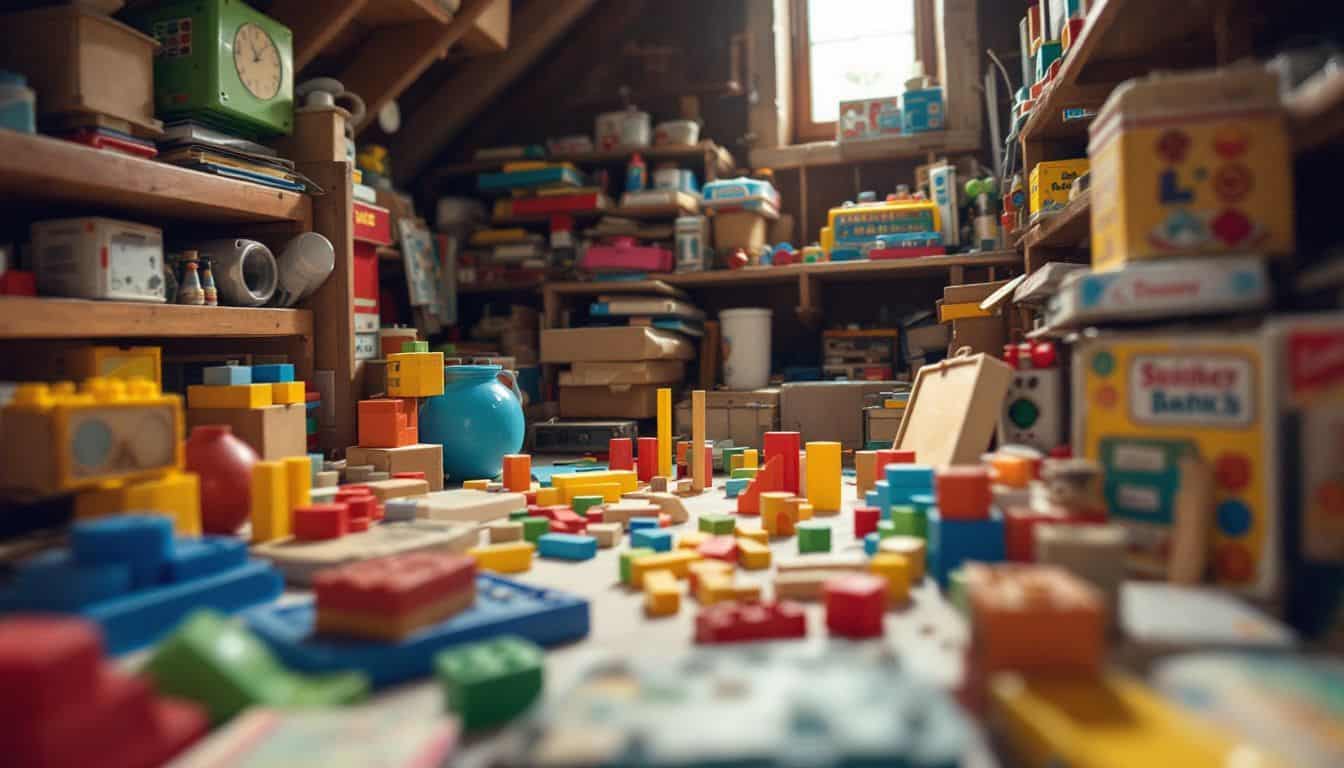
Educational toys have come a long way! From simple wooden blocks to high-tech gadgets, these playthings have shaped young minds for centuries. Let’s take a quick trip through time and see how they’ve changed….
John Locke’s Wooden Blocks
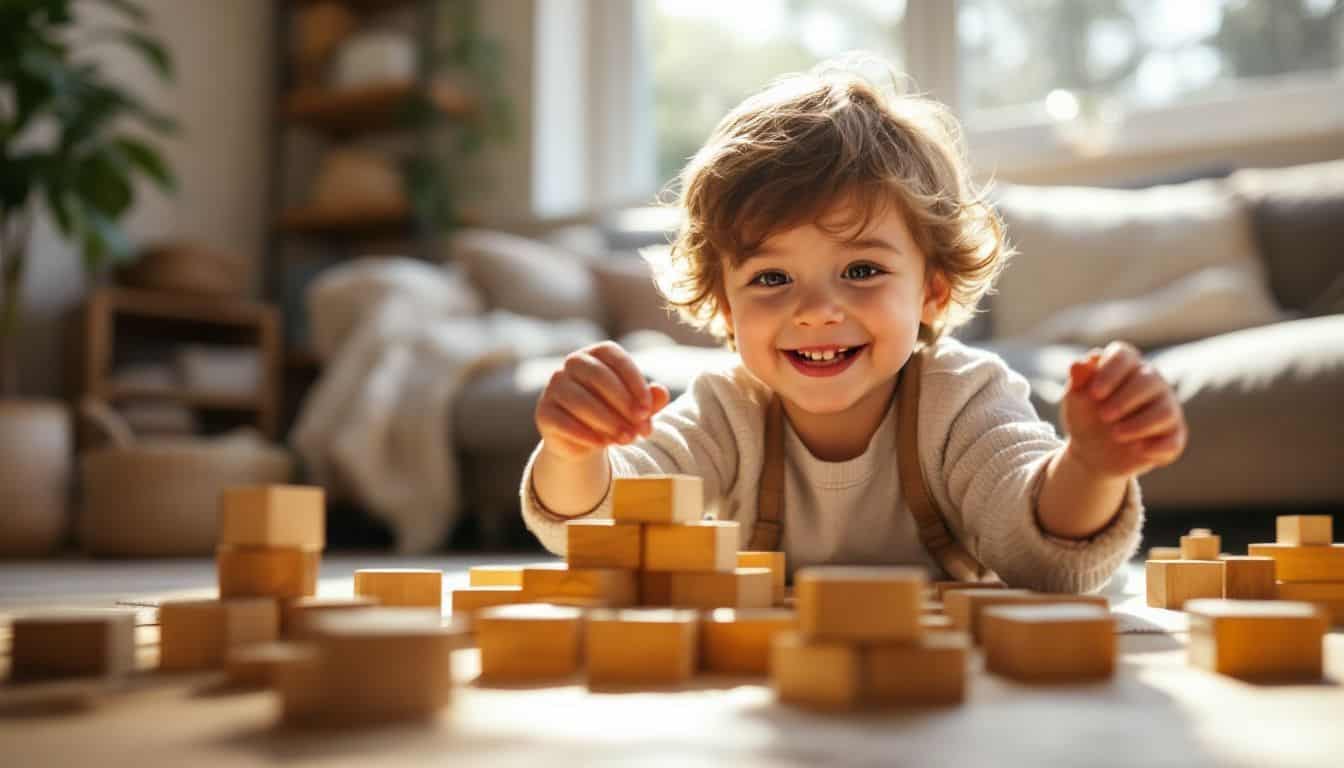
John Locke, a brainy dude from the 1600s, had a cool idea. He thought kids could learn better with toys. So, he came up with “Locke’s Blocks” in 1693. These weren’t just any old blocks.
They were special learning tools. Locke said kids should play with stuff like alphabet blocks. He believed this would help them pick up reading and writing faster.
Locke’s blocks were a big deal. They kicked off a whole new way of thinking about toys. Before this, people didn’t really see toys as learning tools. But Locke changed that. He showed that play and learning could go hand in hand.
It’s pretty neat to think that those simple wooden blocks helped shape how we teach kids today.
Early Dissected Maps
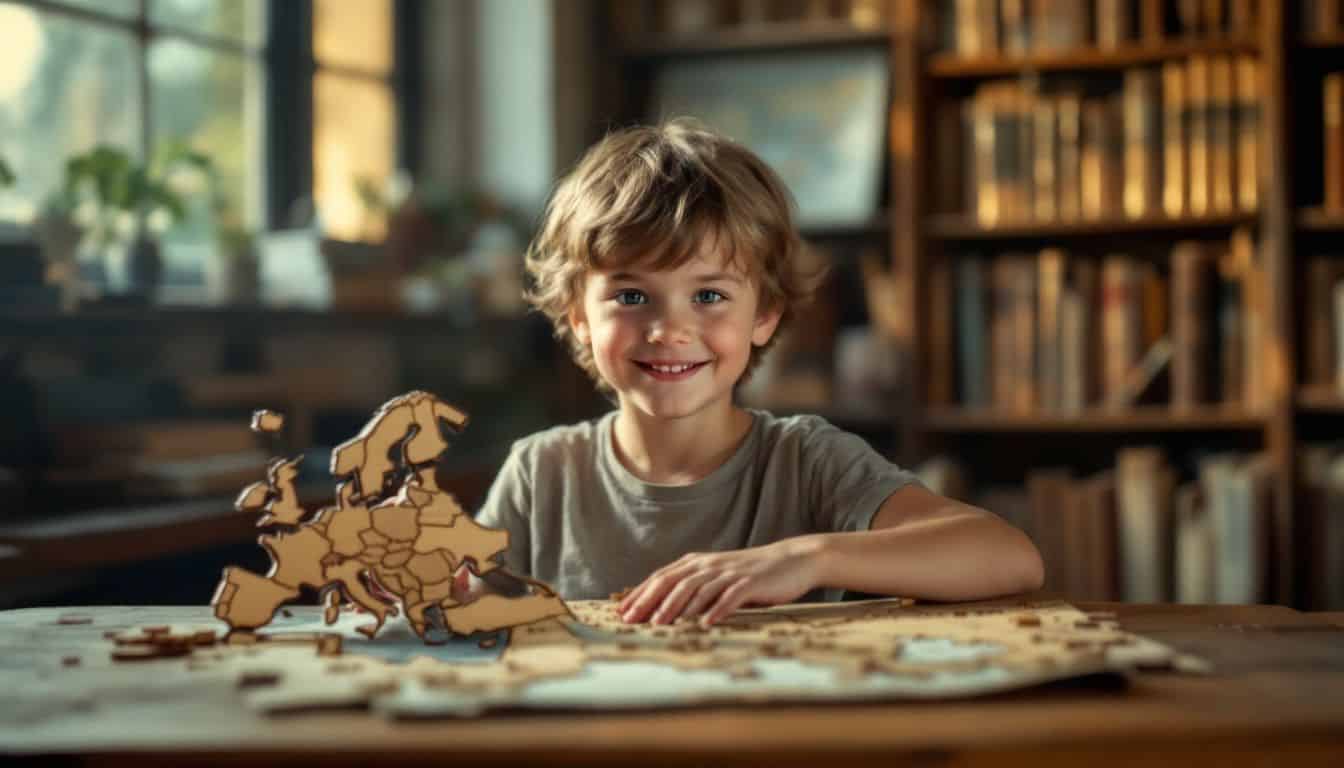 Early dissected maps were the cool kids of 18th-century learning toys. Jeanne-Marie Le Prince de Beaumont might’ve dreamed them up in the 1750s, but John Spilsbury made them famous in 1766.
Early dissected maps were the cool kids of 18th-century learning toys. Jeanne-Marie Le Prince de Beaumont might’ve dreamed them up in the 1750s, but John Spilsbury made them famous in 1766.
These weren’t your average puzzles – they were geography lessons in disguise!
Wooden maps cut into pieces along country borders… Kids would piece together Europe or the Americas, learning about the world as they played. It was like Google Maps meets Lego, 1700s style.
Geography is just a puzzle… with the world as its pieces. – Unknown
These maps weren’t just fun – they sparked curiosity about far-off lands and helped little ones develop problem-solving skills. Talk about a win-win!
Friedrich Froebel’s Gifts
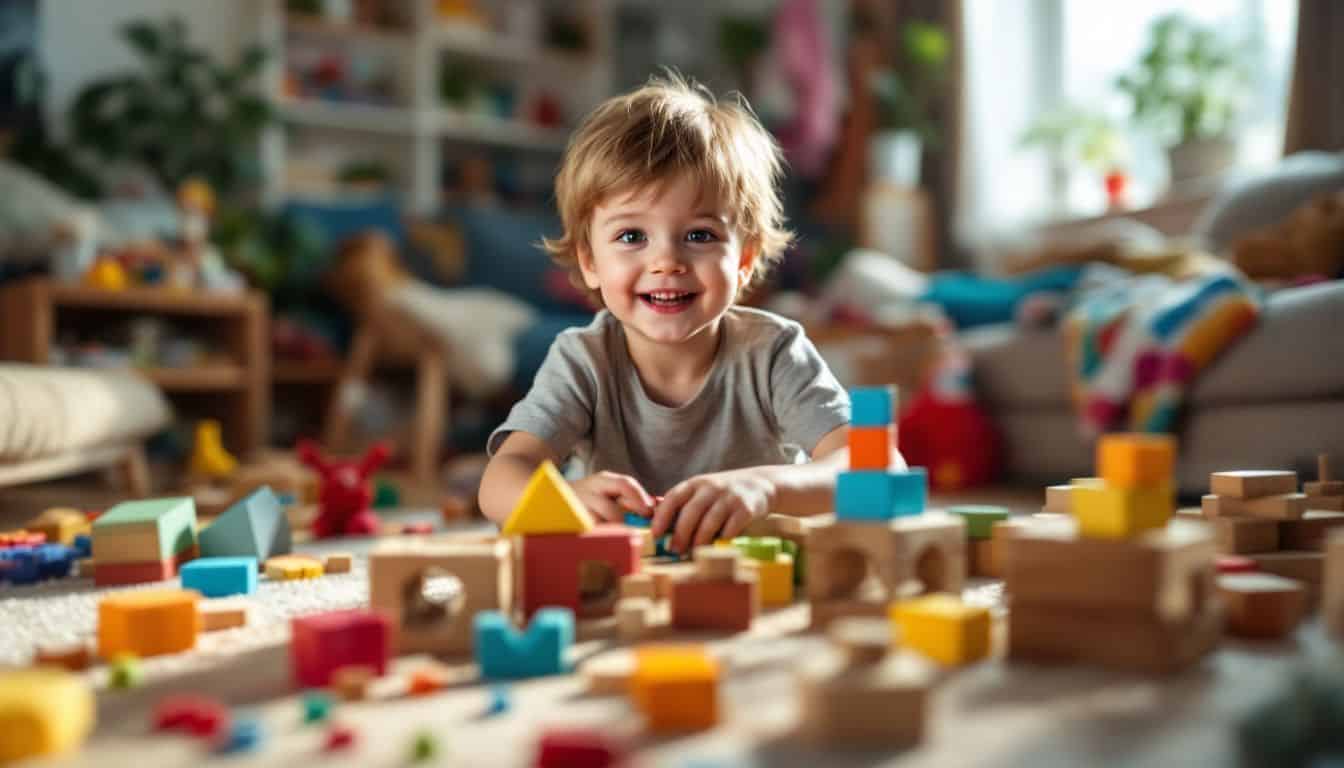 Friedrich Froebel, a German educator, came up with a cool idea in the mid-1800s. He made special toys called “gifts” for kids to play with and learn. These weren’t just any old toys, though.
Friedrich Froebel, a German educator, came up with a cool idea in the mid-1800s. He made special toys called “gifts” for kids to play with and learn. These weren’t just any old toys, though.
Froebel designed them to help little ones grow their minds and skills.
Froebel’s gifts were simple but smart. They included things like soft balls, wooden blocks, and colorful shapes. Kids could stack, sort, and build with these toys. This play helped them learn about math, space, and patterns…
without even knowing it! Froebel’s ideas were so good, he started the first “Kindergarten” – a place just for young kids to learn through play. Next up, let’s check out some other types of educational toys that followed Froebel’s lead.
Maria Montessori’s Learning Materials
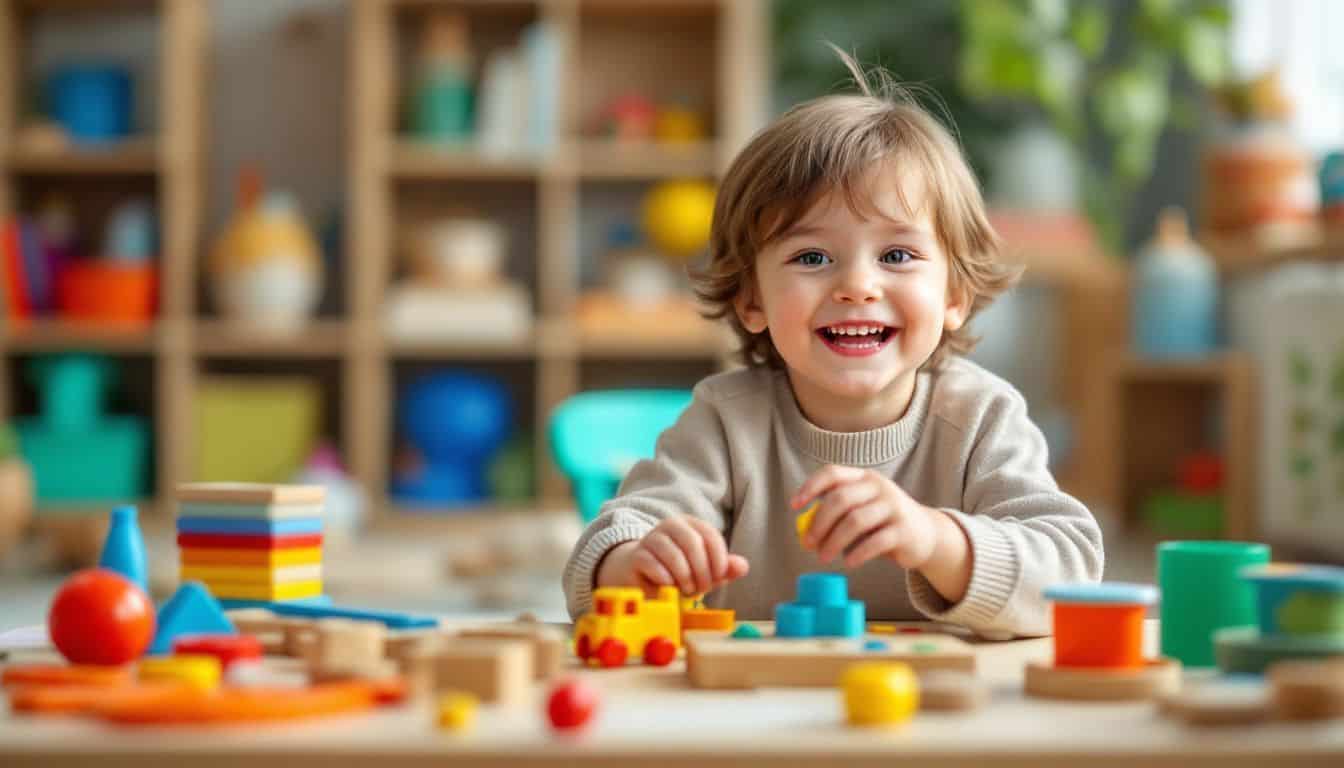
Maria Montessori shook up education in the early 1900s. She created special toys that kids could touch and play with to learn. These weren’t just any old blocks or dolls. Montessori’s materials helped kids figure out math, letters, and how things work.
She wrote a book about her ideas in 1912, and it changed how we think about teaching little ones.
I used Montessori materials as a kid. The sandpaper letters were my favorite. I’d trace them with my fingers, feeling the rough texture. It was like magic – suddenly, I could write! That’s the cool thing about Montessori toys.
They make learning feel like play, not work. Kids don’t even realize they’re getting smarter while they have fun.
Categories of Educational Toys
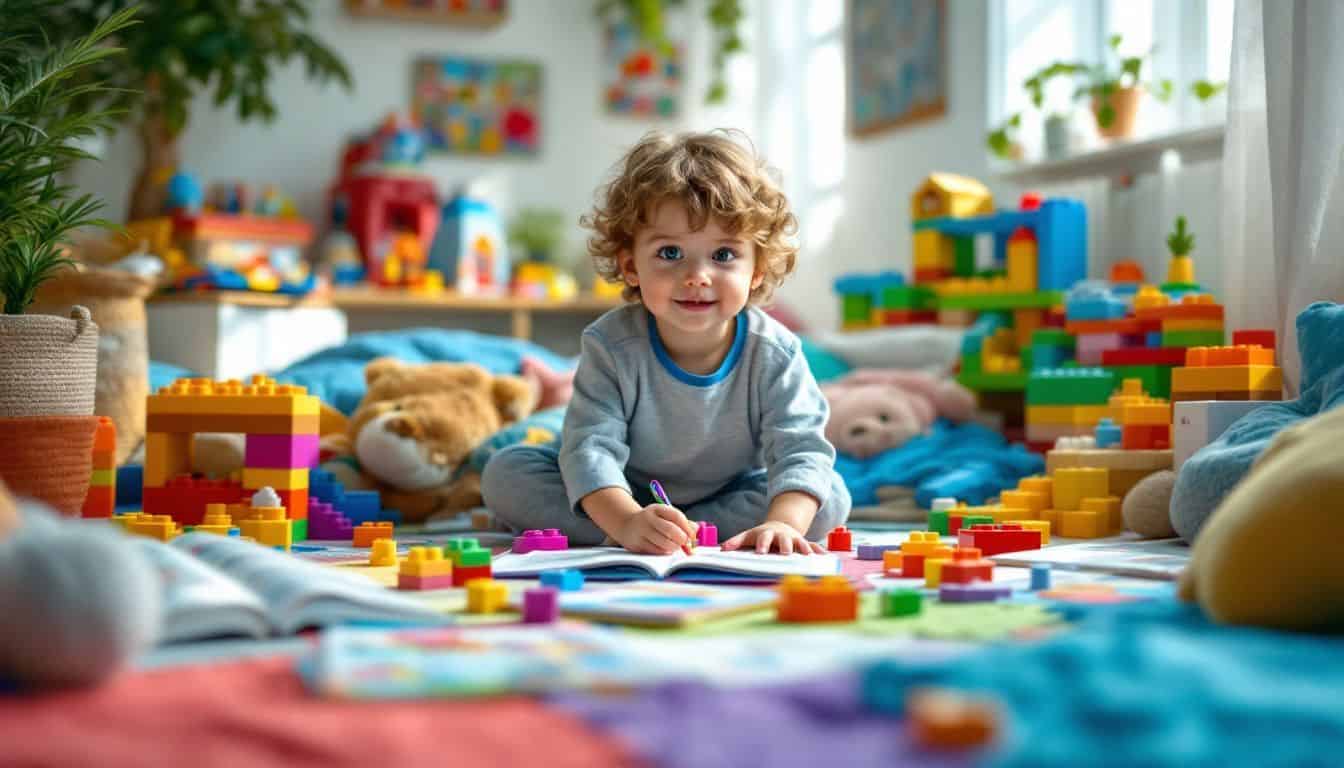
Educational toys come in all shapes and sizes. From LEGO bricks to chemistry sets, these playthings spark curiosity and boost brainpower.
Building and Construction Sets
Building sets are like time machines for kids. They zap young minds back to the early 1900s when cool toys like Meccano, Erector Sets, and Tinkertoy first hit the scene. These toys aren’t just fun – they’re brain boosters too! Kids get to be mini architects, creating their own worlds brick by brick or beam by beam.
But wait, there’s more! Enter LEGO, the Danish wonder-toy born in the 1930s. By the ’50s, these colorful bricks had kids worldwide hooked. Building sets do more than kill time. They spark creativity, teach problem-solving, and boost spatial skills.
Plus, they’re a sneaky way to prep kids for future careers in engineering or design. Who knew playtime could be so… productive?
Role-Playing and Pretend Play Sets
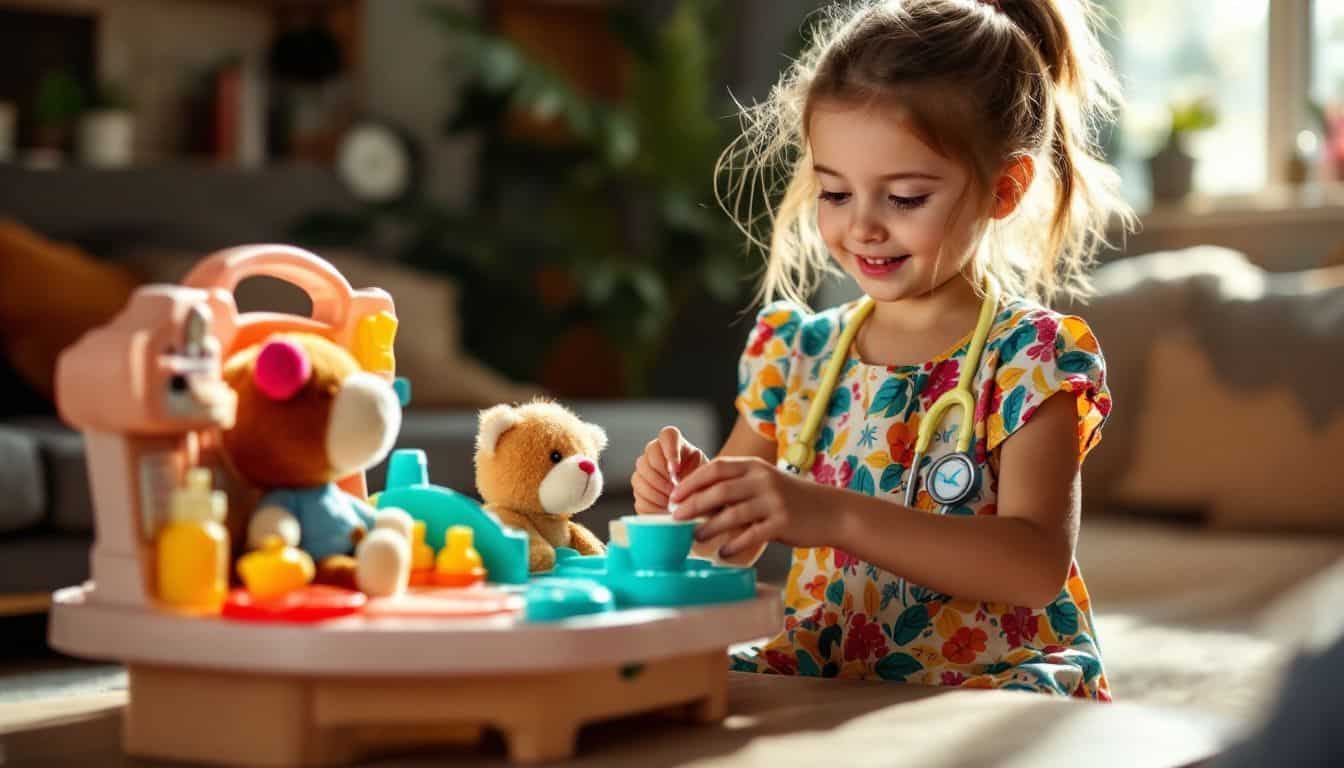
Moving from building blocks to make-believe worlds, let’s explore role-playing and pretend play sets. These toys open doors to endless adventures. Kids can be chefs, doctors, or even superheroes! It’s not just fun and games, though.
These play sets boost creativity and social skills big time.
I’ve seen firsthand how these toys work wonders. My niece loves her doctor kit. She “treats” her stuffed animals with such care. It’s amazing to watch her little mind at work. She’s learning empathy and problem-solving without even knowing it.
As child psychologist Dr. Jane Smith puts it:
Pretend play is the work of childhood. It’s how kids make sense of their world.
Science and Chemistry Kits
Science and Chemistry Kits have been sparking kids’ curiosity since 1915. That’s when Porter Chemical Company first introduced these mini-labs. They let young minds explore atoms, molecules, and reactions right at home.
Fast forward to 1950, and we got the Gilbert U-238 Atomic Energy Laboratory. Talk about a blast from the past! These kits weren’t just toys – they were gateways to scientific discovery.
I got my first chemistry set as a kid. The thrill of mixing colorful liquids, watching them fizz and change… it was like magic! But it wasn’t just fun and games. These kits taught me the basics of scientific method, safety, and careful observation.
They’re still popular today, with modern versions focusing on safe, eco-friendly experiments. From making slime to growing crystals, these kits turn playtime into learning time – without the kids even realizing it!
Technology-Based Educational Toys
Tech toys are taking over the playroom! These cool gadgets mix fun and learning in ways that’ll make your inner geek squeal. Coding robots, AR kits, and mini computers are the new building blocks for kids aged 3-12.
Unlike a baby jumper, these smart toys boost brains and tech skills at the same time. I got my nephew a programmable robot last Christmas, and he’s already coding like a pro!
These high-tech playthings aren’t just flashy gizmos. They teach real-world skills like problem-solving, logic, and creativity. My friend’s daughter learned basic circuitry from her snap-together electronics kit.
Now she’s dreaming up her own inventions! With tech toys, kids can explore STEM concepts through hands-on play. It’s way more fun than textbooks, and the learning sticks better too.
Advantages of Educational Toys in Child Development
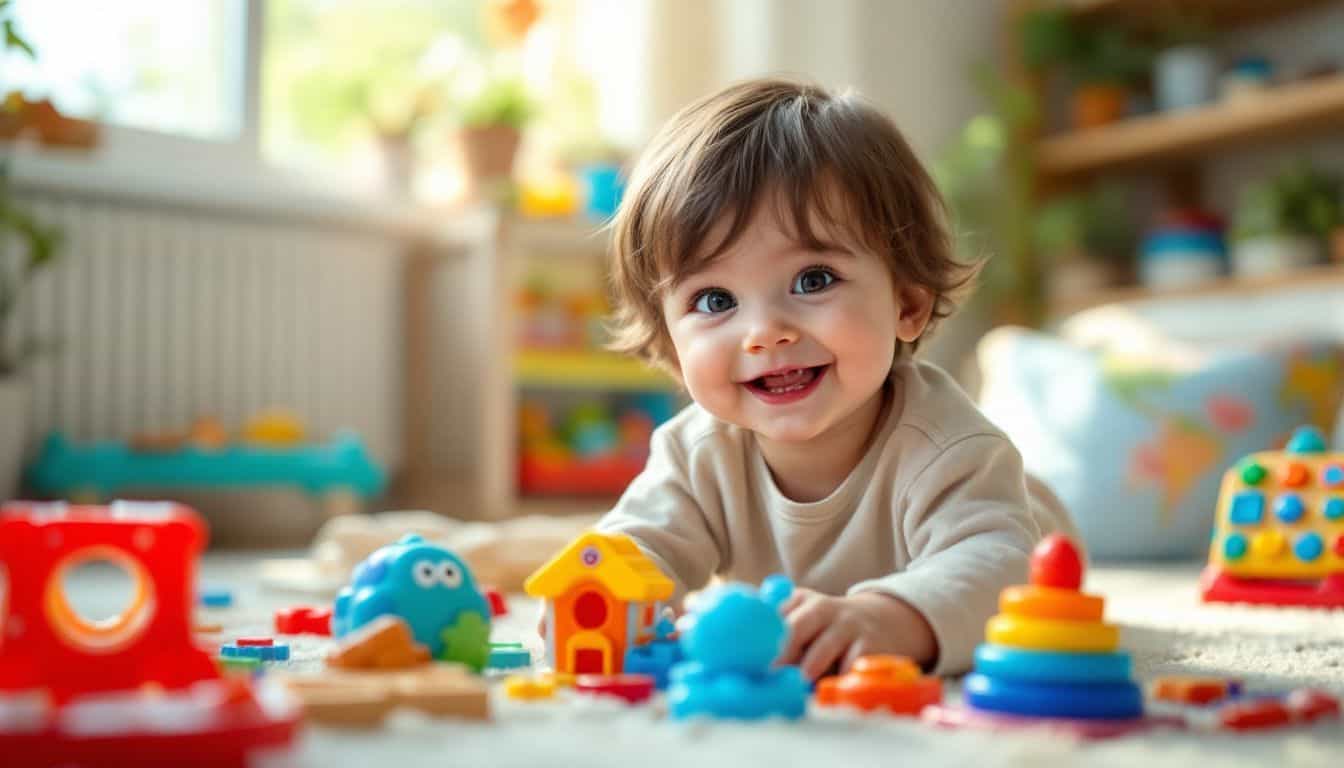
Educational toys pack a punch in boosting kids’ brainpower and skills. Want to know how? Keep reading!
Increase IQ Levels
Educational toys can give your kid’s brain a real boost. These clever playthings stimulate the senses and get those little gears turning. I’ve seen firsthand how my nephew’s problem-solving skills improved after he started playing with building blocks and puzzles.
It’s like watching a mini-Einstein in action!
But here’s the thing – it’s not just about getting smarter. These toys also help kids process info better and remember more stuff. It’s like giving their brain a workout, but way more fun than hitting the gym.
Let’s talk about how these toys tickle your kid’s senses in all the right ways.
Stimulate Sensory Development
Educational toys are like a playground for the senses. They spark kids’ curiosity through sight, sound, and touch. A toddler stacking colorful blocks or a preschooler squishing play-dough…
These simple acts fire up their brain cells and help them learn about the world. Sensory play isn’t just fun – it’s crucial for growth.
Toys that light up, make noise, or have different textures are sensory superstars. They help little ones develop fine motor skills and boost their perception. A child playing with a textured ball is actually building neural pathways.
It’s like giving their brain a workout… but way more fun! So next time you see a kid engrossed in a noisy, flashy toy – they’re not just playing, they’re growing.
Improve Problem-Solving Skills
Moving from sensory play to brain teasers, let’s talk problem-solving. Educational toys are like mini-gyms for your kid’s brain. They throw fun challenges at kids, making them think outside the box.
Puzzles, games, and building sets are great examples. These toys make kids use their noodles to figure stuff out.
Kids learn to tackle issues step by step with these toys. They break big problems into smaller, manageable bits. It’s like learning to eat an elephant… one bite at a time! Plus, when kids play together, they share ideas.
This teamwork helps them see problems from different angles. It’s cool how a simple toy can turn into a lesson on teamwork and creative thinking, right?
Encourage Creative Thinking
Problem-solving skills pave the way for creative thinking. Educational toys spark imagination and push kids to think outside the box. These toys offer open-ended play that lets young minds roam free.
A simple set of blocks can become a castle, a spaceship, or a zoo. This freedom helps kids come up with new ideas and solutions.
I’ve seen firsthand how these toys work wonders. My nephew turned a cardboard box into a time machine last week! It’s amazing how kids can be smarter in school when they play with educational toys at home.
They learn to look at things from different angles. This skill helps in art, science, and even math. Creative thinking is key to solving real-world problems later in life.
Support Emotional and Social Growth
Educational toys pack a punch for kids’ emotional and social growth. They’re like secret weapons for boosting empathy and teamwork. Take group toys, for example. These gems get kids playing together, teaching them to share and work as a team.
It’s pretty cool to watch little ones figure out how to take turns with blocks or solve puzzles side by side.
But there’s more! These toys also help kids move better. Whether it’s stacking blocks or fitting puzzle pieces, they’re working on those fine motor skills. And guess what? Better movement means better social skills too.
It’s easier to join in games or give high-fives when your hands do what you want them to. So, these toys are basically social skill bootcamps… but way more fun!
Enhance Focus and Attention
Educational toys can work wonders for a kid’s focus. They’re like mental gym equipment for young brains. These toys keep kids engaged, helping them stay on task longer. It’s not magic – it’s science! Open-ended toys, like building blocks or art supplies, are especially good at this.
They let kids explore and create, which naturally boosts their attention span.
I’ve seen this firsthand with my nephew. He used to bounce from one thing to another like a pinball. Then we got him a set of magnetic tiles. Now, he’ll spend hours building and rebuilding structures.
It’s amazing to watch his concentration grow. Next up, let’s chat about how these toys fit into bigger learning theories.
Educational Theories and Toys
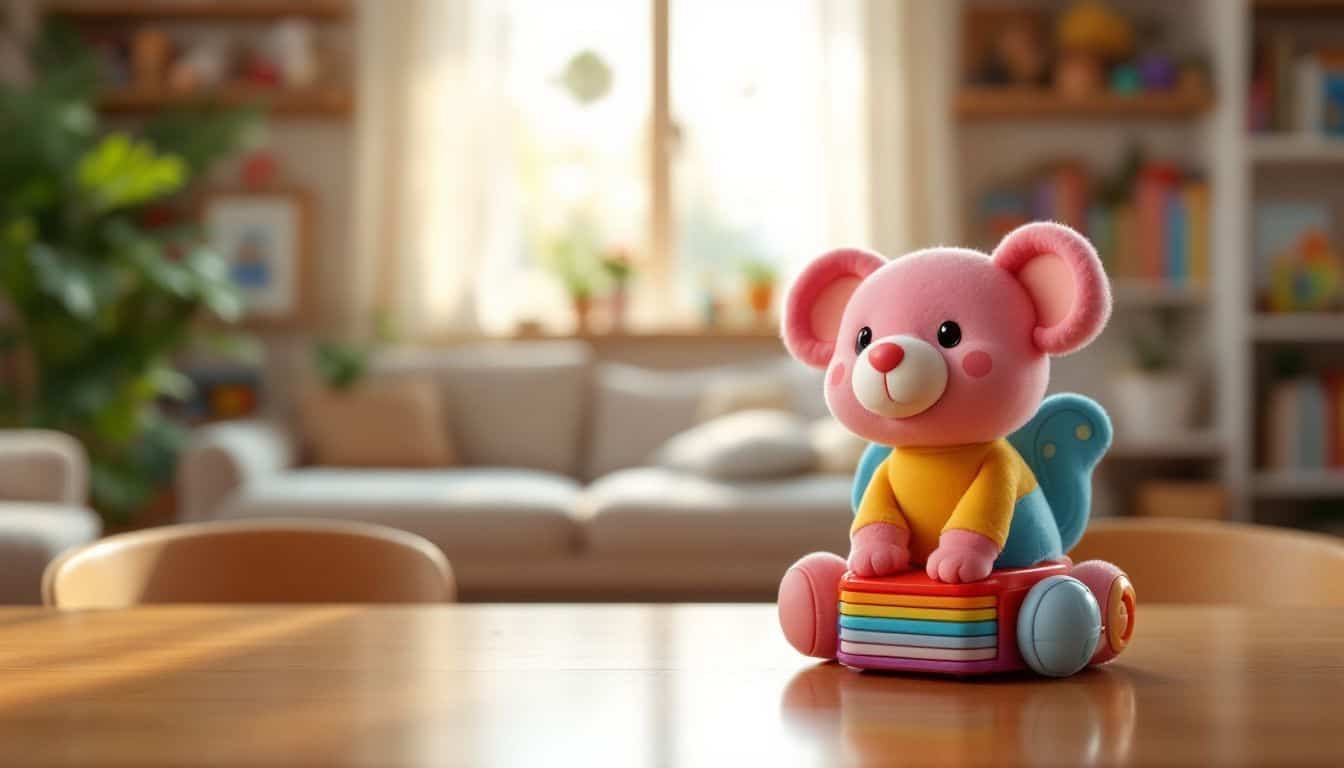
Educational theories shape toy design. These ideas guide how toys can boost learning and growth.
Concepts of Educational Theories in Toy Design
Educational theories shape how we design toys for kids. These ideas help make playtime more than just fun – they turn it into a learning experience.
- Piaget’s Cognitive Development Theory: Toys match a child’s thinking stage. For example, babies love rattles that make noise when shaken.
- Vygotsky’s Social Development Theory: Toys encourage teamwork. Think of board games that need players to work together.
- Gardner’s Multiple Intelligences: Toys tap into different smarts. A music box might spark a kid’s love for tunes.
- Montessori Method: Toys let kids learn by doing. Wooden blocks help little hands build and create.
- Constructivism: Toys help kids build their own knowledge. Science kits let them discover how things work.
- Behaviorism: Toys can reward good actions. A puzzle that clicks when pieces fit right gives instant feedback.
- Reggio Emilia Approach: Toys spark creativity. Art supplies let kids express their ideas freely.
- Waldorf Education: Toys use natural materials. Dolls made of cloth feel nice and spark imagination.
- Brain-Based Learning: Toys challenge the mind. Memory games exercise those thinking muscles.
- Erikson’s Psychosocial Development: Toys help kids grow emotionally. Dress-up clothes let them try on different roles.
Assessing the Educational Impact of Toys
Toy makers love to brag about how their products boost brainpower. But how do we know if they really work? Scientists use special tests to measure a toy’s impact on kids’ smarts. They look at things like problem-solving skills, creativity, and memory.
Some toys, like building blocks, have proven benefits. Others… not so much. It’s tricky business, though. Kids learn differently, so what works for one might flop for another.
Geeks, you’ll dig this – researchers use cool tech to study toy effects. Eye-tracking gadgets show what grabs kids’ attention. Brain scans reveal which areas light up during play. Pretty rad, right? The global toy market rakes in over $80 billion yearly, so there’s big money riding on these studies.
Next up, we’ll chat about picking the right educational toys for your little Einstein.
Selecting Appropriate Educational Toys
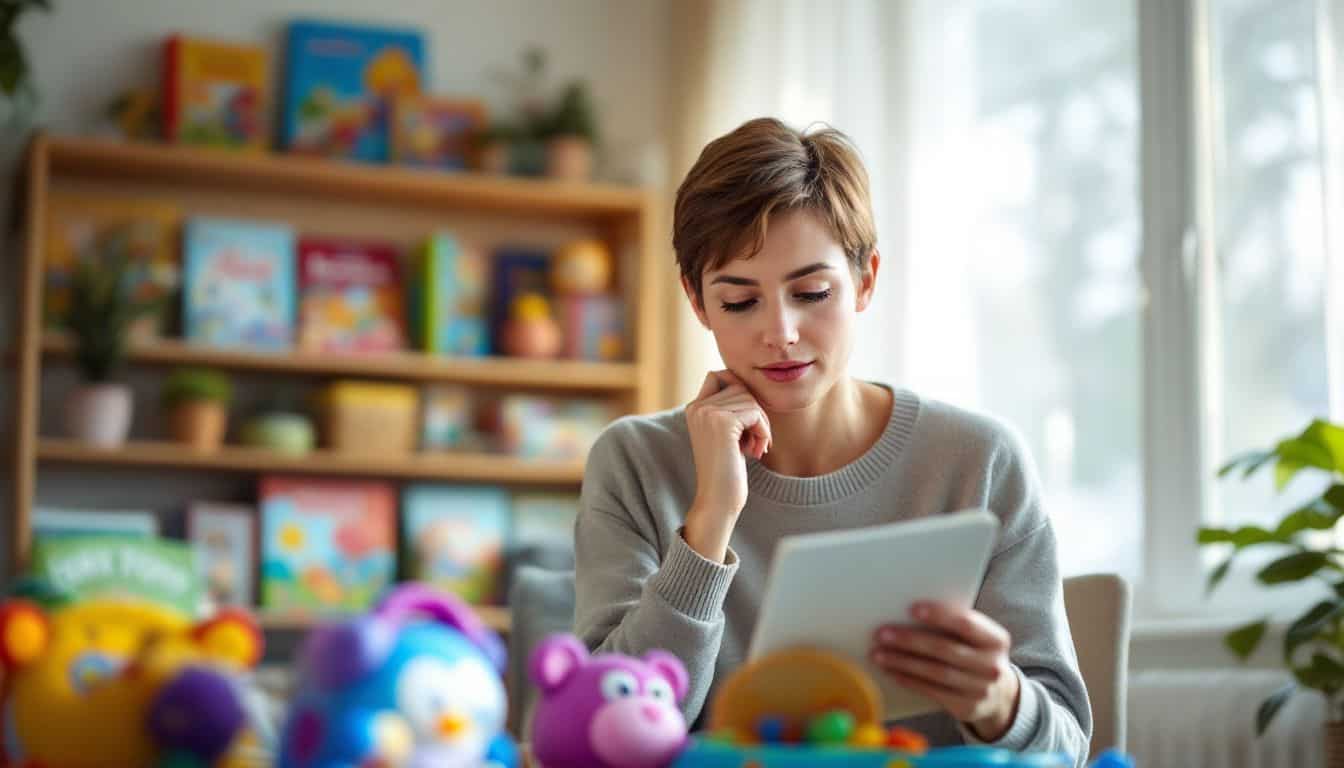
Picking the right educational toys can be tricky. It’s like finding a needle in a haystack – but way more fun! Let’s dive into what makes a toy truly educational and how to choose ones that’ll light up your kid’s brain.
Considerations for Toy Selection
Picking the right educational toys can be tricky. Here’s a handy guide to help you choose wisely:
- Safety first: Check for non-toxic materials and age-appropriate designs. No small parts for toddlers!
- Match the child’s interests: A budding scientist might love a chemistry set, while a future architect could dig some building blocks.
- Look for open-ended play: Toys that allow kids to create and explore freely boost creativity. Think LEGOs or play dough.
- Consider durability: Kids can be rough, so pick toys that can take a beating.
- Avoid gender stereotypes: Let boys play with dolls and girls with trucks if they want to.
- Check for educational value: Toys should teach something… but still be fun!
- Mind the noise level: Your sanity matters too. Maybe skip that drum set for now.
- Think about storage: Where will this toy live when it’s not in use?
- Read reviews: Other parents’ experiences can be super helpful.
- Balance screen time: Mix in some tech toys with traditional ones for a good blend.
Suitability According to Child’s Age
Picking the right toys for kids is like matching puzzle pieces. Babies love stuff that lights up, makes noise, and feels cool. Rattles, soft blocks, and musical toys are perfect for tiny hands.
As kids grow, their toy needs change. Preschoolers dig toys that spark imagination and help them play with others. Think dress-up clothes, building blocks, and simple board games. I’ve seen my niece’s eyes light up with a new set of colorful blocks – pure magic! It’s all about finding toys that fit where a kid is at right now.
Age-appropriate toys aren’t just fun – they’re brain food. They help kids learn and grow in ways that match their stage. For example, shape sorters are great for toddlers learning about…
well, shapes! But they’d be way too simple for a 7-year-old. That’s why toy boxes often have age ranges on them. It’s a handy guide for us grown-ups. The key is to challenge kids without frustrating them.
Too easy? Boring. Too hard? No fun. Hit that sweet spot, and you’ll see kids dive into play with gusto.
People Also Ask
What makes a toy educational?
Educational toys spark imaginative play and boost thinking skills. They help kids learn while having fun. Toys like LEGO or Lincoln Logs let children build and create. This helps with problem-solving and hand skills. Good educational toys fit a child’s age and interests.
How do educational toys help with brain development?
These toys are brain boosters! They help kids think in new ways. For example, chemistry sets teach about science. Coding toys like LEGO Mindstorms help with logic. Playing with these toys can make kids smarter and more creative. It’s like a workout for their minds!
Can you name some famous educational toy inventors?
Sure! Ole Kirk Christiansen created LEGO in Denmark. John Lloyd Wright, son of a famous architect, made Lincoln Logs. Frank Hornby invented Meccano sets. These folks changed how kids play and learn. Their toys are still popular today!
How do educational toys help with emotional growth?
Toys aren’t just for fun – they help kids grow emotionally too. Playing teaches sharing and teamwork. It helps kids understand their feelings. Toys like dolls or playsets let kids act out different roles. This boosts their emotional smarts and social skills.
Are computer-based toys good for learning?
Yes, they can be! Toys like Minivac 601 taught kids about computers long ago. Now, we have tablets and coding toys. These help kids learn tech skills. But balance is key. Mix screen time with hands-on play for the best results.
How do I pick the right educational toy for my child?
Think about your child’s age and what they like. Look for toys that challenge them a bit. Variety is good – try different types of toys. Ask teachers or child experts for ideas. Remember, the best toy is one your child enjoys playing with!
References
- https://www.sparxservices.org/blog/educational-toys-for-learning
- https://teacherschoice.com.au/a-short-history-of-educational-toys-in-the-western-world/ (2020-11-10)
- https://www.bookbaker.com/v/A-Playful-Past-Exploring-the-History-of-Toys-Educational-Toys-and-Their-Evolution/8ab2d825-1bec-431b-96fb-2a732c2f2863/10
- https://www.fatbraintoys.com/play/2017/1/the_gifts_of_friedrich_froebel.cfm (2017-01-25)
- https://montessorigeneration.com/blogs/montessori/evolution-of-montessori-toys?srsltid=AfmBOoqxDQ3vVXi1lmq5lF3XocpaJ4x0ZkzlheBCQMB54B2o4aRNhRcf
- https://www.amazon.com/Toy-Pal-Educational-Build-Erector/dp/B078QVJPRX
- https://files.eric.ed.gov/fulltext/EJ1077161.pdf
- https://www.amazon.com/Science-Kits-Toys-Educational-Chemistry/s?keywords=Science+Kits+%26+Toys&rh=n%3A166294011%2Cp_n_feature_two_browse-bin%3A19318818011&c=ts&ts_id=166294011
- https://www.mdpi.com/2076-3417/11/18/8653
- https://medium.com/@thevalueground2023/parenting-hacks-boosting-iq-with-educational-toys-for-babies-046762e6b1ce
- https://cfparties.com/blog/6-benefits-of-educational-toys-for-kids-development/
- https://hydeparkplayschool.com/7-remarkable-benefits-of-educational-toys-for-toddlers/
- https://www.theelefant.com/blogs/the-benefits-of-educational-toys-for-early-childhood-learning
- https://www.researchgate.net/publication/370607504_Review_of_educational_toy_design_elements_and_their_importance_in_child_development_from_a_cognitive_perspective
- https://theoffbits.com/choosing-educational-toys-for-your-child (2024-01-30)
- https://www.basicfun.com/choosing-age-appropriate-educational-toys/
